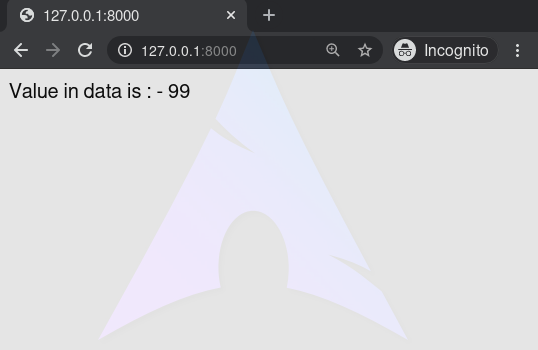布尔运算符 – Django模板标签
Django模板是一个使用Django模板语言标记的文本文档或Python字符串。Django是一个强大的包含电池的框架,为在模板中呈现数据提供了便利。Django模板不仅允许从视图到模板传递数据,而且还提供了一些有限的编程功能,如变量、for循环、注释、扩展、if else等。
这篇文章围绕着如何在模板中使用布尔运算符。{% if %}标签会评估一个变量,如果该变量为 “真”(即存在,不为空,也不是一个假的布尔值),则会输出该块的内容。人们可以在Django If Template标签中使用各种布尔运算符。
语法:
{% if variable boolean_operator value %}
// statements
{% endif %}
示例:
if标签可以使用和、或不来测试一些变量或否定一个给定的变量。
{% if athlete_list and coach_list %}
Both athletes and coaches are available.
{% endif %}
{% if not athlete_list %}
There are no athletes.
{% endif %}
{% if athlete_list or coach_list %}
There are some athletes or some coaches.
{% endif %}
{% if not athlete_list or coach_list %}
There are no athletes or there are some coaches.
{% endif %}
{% if athlete_list and not coach_list %}
There are some athletes and absolutely no coaches.
{% endif %}
正如人们所看到的,if标签可以接受一个或几个{% elif %}子句,以及一个{% else %}子句,如果前面所有的条件都失败,就会显示出来。这些子句是可选的。
布尔运算符 – Django模板标签说明
用一个例子说明如何在Django模板中使用布尔运算符。考虑一个名为geeksforgeeks的项目,它有一个名为geeks的应用程序。
现在创建一个视图,我们将通过它来传递上下文字典。
In geeks/views.py,
# import Http Response from django
from django.shortcuts import render
# create a function
def geeks_view(request):
# create a dictionary
context = {
"data" : 99,
}
# return response
return render(request, "geeks.html", context)
创建一个url路径来映射到这个视图。在geeks/urls.py中。
from django.urls import path
# importing views from views.py
from .views import geeks_view
urlpatterns = [
path('', geeks_view),
]
在templates/geeks.html中创建一个模板。
{% if data == 99 %}
Value in data is : - {{ data }}
{% else %}
Data is empty
{% endif%}
让我们检查一下”/”上显示的内容是否在模板中显示。

布尔操作
== 操作符
Equality. 示例:
{% if somevar == "x" %}
This appears if variable somevar equals the string "x"
{% endif %}
!= 操作符
Inequality. 示例:
{% if somevar != "x" %}
This appears if variable somevar does not equal the string "x",
or if somevar is not found in the context
{% endif %}
**< 操作符 **
例子:
{% if somevar < 100 %}
This appears if variable somevar is less than 100.
{% endif %}
>操作符
例子:
{% if somevar > 0 %}
This appears if variable somevar is greater than 0.
{% endif %}
**<=操作符 **
小于或等于。例如:
{% if somevar <= 100 %}
This appears if variable somevar is less than 100 or equal to 100.
{% endif %}
**>=操作符 **
大于或等于。例子。
{% if somevar >= 1 %}
This appears if variable somevar is greater than 1 or equal to 1.
{% endif %}
in 操作符
包含在里面。许多 Python 容器都支持这个操作符,用来测试给定的值是否在容器中。下面是一些例子,说明x在y中会如何解释。
{% if "bc" in "abcdef" %}
This appears since "bc" is a substring of "abcdef"
{% endif %}
{% if "hello" in greetings %}
If greetings is a list or set, one element of which is the string
"hello", this will appear.
{% endif %}
{% if user in users %}
If users is a QuerySet, this will appear if user is an
instance that belongs to the QuerySet.
{% endif %}
不在操作符
不包含在其中。这是对in运算符的否定。
is 操作符
对象身份。测试两个值是否是同一个对象。例子。
{% if somevar is True %}
This appears if and only if somevar is True.
{% endif %}
{% if somevar is None %}
This appears if somevar is None, or if somevar is not found in the context.
{% endif %}
not操作符
否定的对象身份。测试两个值是否不是同一个对象。这是对is运算符的否定。例子。
{% if somevar is not True %}
This appears if somevar is not True, or if somevar is not found in the
context.
{% endif %}
{% if somevar is not None %}
This appears if and only if somevar is not None.
{% endif %}
 极客教程
极客教程